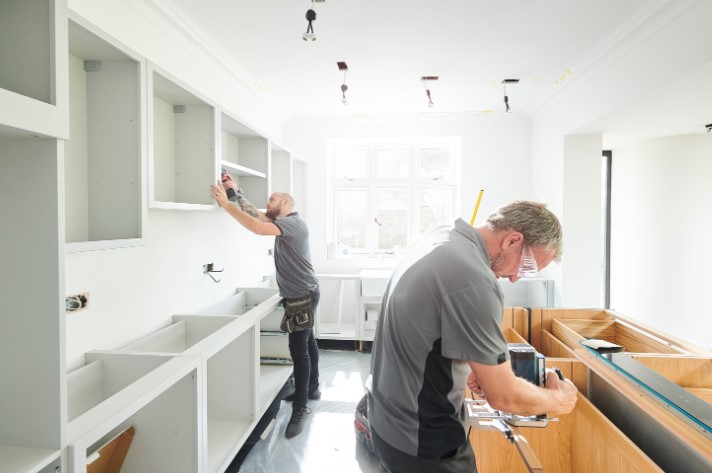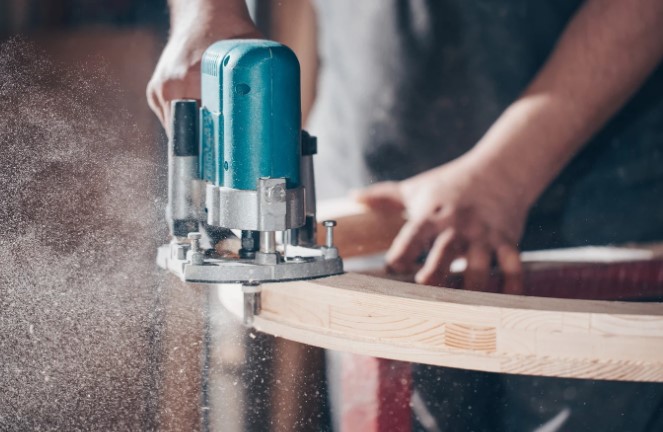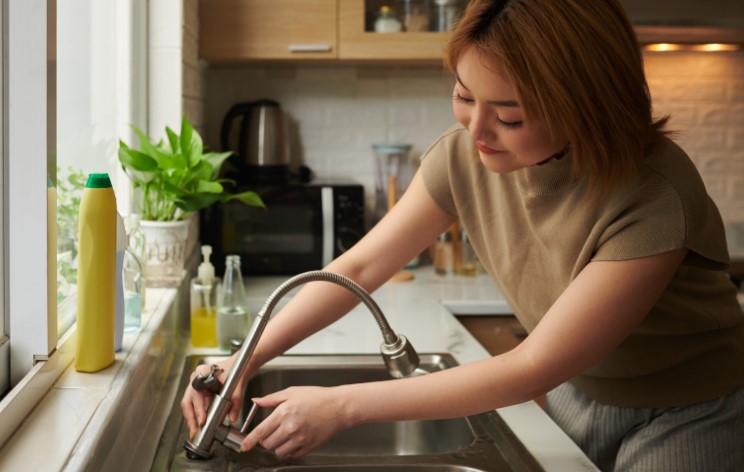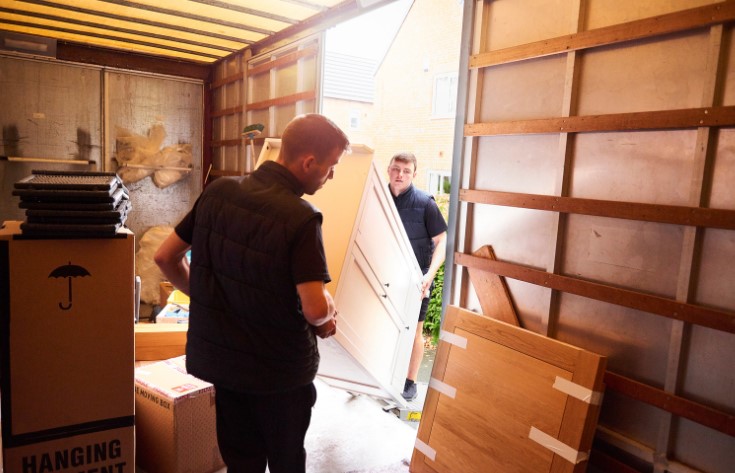- How Much Does It Cost to Fit a Kitchen Labour Only?
- How Much Does Kitchen Fitting Cost?
- What Is the Kitchen Fitting Cost Per Unit in the UK?
- How Much Does It Cost to Fit a Kitchen Worktop?
- Average Cost to Fit Kitchen Sinks, Taps, and Appliances
- What’s Normally Included in Kitchen Installation Costs?
- How Much Does Kitchen Replacement Cost in the UK?
- What Is the Cost to Remove an Old Kitchen?
- How Much Should You Pay for a Full Kitchen Installation?
- How Much Does It Cost to Replace Kitchen Flooring?
- Reasons to Use a Kitchen Fitter
- Conclusion
Wondering how much does kitchen fitting cost? Kitchen renovations are one of the most rewarding home improvement projects. Not only does a modern kitchen improve functionality, but it also adds significant value to your property. However, understanding the cost of kitchen fitting is essential to avoid overspending.
Whether you’re planning a full renovation or simply installing a worktop, this guide provides a detailed breakdown of costs, factors to consider, and even tips for DIY projects like fitting a worktop without cabinets.
How Much Does It Cost to Fit a Kitchen Labour Only?
If you already have all your kitchen materials and just need a professional to install them, you’re looking at labour-only costs.
In the UK, kitchen fitters charge an average of £150–£250 per day, depending on location and expertise. For a typical installation, labour costs range between £1,500 and £3,500 for an average-sized kitchen.
What Influences Labour-Only Costs?
- Kitchen Size: Larger kitchens require more time and labour, increasing costs.
- Location: Labour rates tend to be higher in cities like London and the South East compared to other parts of the UK.
- Additional Professionals:
- Electricians: £300–£1,000 for rewiring.
- Plumbers: £150–£400 for fitting sinks or taps.
- Tilers: £200–£800 for flooring or splashbacks.
To save money, ensure you hire experienced fitters, compare multiple quotes, and confirm what’s included in the service.

How Much Does Kitchen Fitting Cost?
How to Fit a Kitchen Worktop Without Cabinets?
What Are the Common Scenarios for Fitting a Worktop Without Cabinets?
You might need to fit a worktop without cabinets in the following cases:
- Temporary kitchens during home renovations.
- Minimalist designs, such as floating worktops.
- Situations where cabinets are delayed or being replaced later.
What Are the Tools and Materials Needed?
For this DIY project, you’ll need:
- Tools: Spirit level, power drill, saw, screws.
- Materials: Wall brackets, support legs, fixing plates, and sealant.
Step-by-Step Guide
- Measure and Plan: Mark the desired height and position of the worktop on the wall.
- Install Wall Brackets: Secure heavy-duty brackets evenly along the wall for support.
- Add Support Legs: For longer worktops or heavier materials, attach adjustable legs or beams for extra stability.
- Fix the Worktop: Screw the worktop into place, ensuring it is level on all sides.
- Seal the Edges: Apply sealant to protect the worktop from moisture and wear.
Tips for Durability
- Ensure wall brackets are rated for the weight of the worktop.
- Avoid overhanging worktops unless they have additional supports.
- Inspect fittings periodically to maintain long-term stability.
What Is the Kitchen Fitting Cost Per Unit in the UK?
Labour-only kitchen unit fitting costs vary depending on the size and complexity of the kitchen:
- Small kitchens: £50–£100 per unit.
- Large kitchens: £100–£200 per unit.
For a 10–15-unit kitchen, expect to pay £1,000–£3,000 for labour alone. Pre-assembled cabinets are quicker to fit and less expensive, while flat-pack kitchens take more time, increasing the overall cost.

How Much Does It Cost to Fit a Kitchen Worktop?
The cost of fitting a kitchen worktop depends on the material and the complexity of the job.
Cost by Material
Laminate Worktops:
- Labour: £100–£200.
- Total cost: £150–£400 (including materials).
Granite or Quartz Worktops:
- Labour: £300–£600.
- Total cost: £1,000–£2,000+ depending on size and thickness.
Additional Costs
- Cutting for sinks or hobs: £50–£150 per cut.
- Polishing edges: £20–£50 per metre.
Professional installation is recommended for materials like granite or quartz to ensure precision and durability.
Average Cost to Fit Kitchen Sinks, Taps, and Appliances
Sink and Tap Installation Costs
A kitchen sink and tap installation costs between £150 and £400. If additional plumbing is required (e.g., relocating pipes), costs can increase to £300–£1,000.
Appliance Installation Costs
- Integrated ovens or dishwashers: £50–£100 per appliance.
- Extractor fans: £100–£250.
Professional installation ensures safety and optimal performance of your kitchen appliances.

What’s Normally Included in Kitchen Installation Costs?
Kitchen installation quotes generally include the following:
Included in Most Quotes
- Cabinet and Worktop Assembly:
- Assembling flat-pack cabinets or fitting pre-assembled units.
- Cutting and securing worktops.
- Basic Plumbing: Connecting sinks, taps, and appliances.
- Basic Electrical Connections: Plugging in or hardwiring appliances like ovens or extractor fans.
- Finishing Touches: Adjusting cabinet doors and sealing worktops.
What’s Not Included
- Rewiring: £300–£1,000.
- Plumbing upgrades: £300–£2,000.
- Flooring installation: £500–£2,000.
- Kitchen removal and disposal: £300–£600.
Request an itemised quote to understand exactly what is covered and to avoid surprise costs.
How Much Does Kitchen Replacement Cost in the UK?
Replacing a kitchen typically involves removing the old one and installing new units, worktops, and appliances.
Cost Ranges by Kitchen Size
- Small Kitchens (8–10 units): £5,000–£8,000.
- Medium Kitchens (12–15 units): £8,000–£12,000.
- Large Kitchens (20+ units): £12,000–£20,000+.
Additional Costs
- Plumbing and rewiring: £1,000–£3,000.
- Flooring replacement: £500–£2,000.
- Removing old kitchens: £300–£600.
Tips to Save Money
- Opt for modular designs instead of bespoke units.
- Use mid-range materials to balance cost and quality.
- Compare quotes from multiple kitchen fitters before hiring.
What Is the Cost to Remove an Old Kitchen?
Removing an old kitchen typically costs between £300 and £600 for labour and waste disposal. If you need to hire a skip for additional waste removal, add £200–£400 to the total cost.
Eco-Friendly Disposal
Consider hiring fitters who recycle materials like wood or metal. Some companies include environmentally responsible disposal in their quotes.

How Much Should You Pay for a Full Kitchen Installation?
For a full kitchen installation, expect to pay £3,000–£7,000, depending on size and materials. This cost includes:
- Cabinet fitting: £1,000–£3,000.
- Worktop fitting: £300–£1,000.
- Sink and appliance fitting: £300–£1,500.
For more complex installations involving rewiring or plumbing upgrades, costs may rise significantly.
How Much Does It Cost to Replace Kitchen Flooring?
Replacing kitchen flooring is a common upgrade that can dramatically change the look of your kitchen.
Average Costs by Material
- Laminate Flooring: £10–£30 per m².
- Tile Flooring: £30–£50 per m².
- Vinyl Flooring: £20–£40 per m².
Labour Costs
- Labour for flooring installation ranges from £200 to £800, depending on the size of your kitchen and the material.
Additional Costs
- Removing old flooring: £300–£600.
- Subfloor repairs or levelling: £200–£500.
Reasons to Use a Kitchen Fitter
Hiring a professional kitchen fitter ensures a stress-free and high-quality renovation.
Advantages of Hiring a Professional
- Precise Fitting: Ensures proper alignment of cabinets, worktops, and appliances.
- Safety: Professionals adhere to UK regulations for electrical and plumbing work.
- Time Efficiency: Professionals can complete the project faster than DIY methods.
- High-Quality Finish: A polished and durable result is guaranteed.
Additional Benefits
- Many fitters provide warranties for their work.
- They have specialised tools and experience to handle bespoke designs.
Conclusion
Kitchen fitting costs vary widely depending on the size, materials, and complexity of your renovation. Whether you’re planning a full kitchen installation or a DIY project like fitting a worktop without cabinets, understanding these costs can help you stay within budget. Start planning your dream kitchen today—it’s an investment in your home and lifestyle!


0 Comments